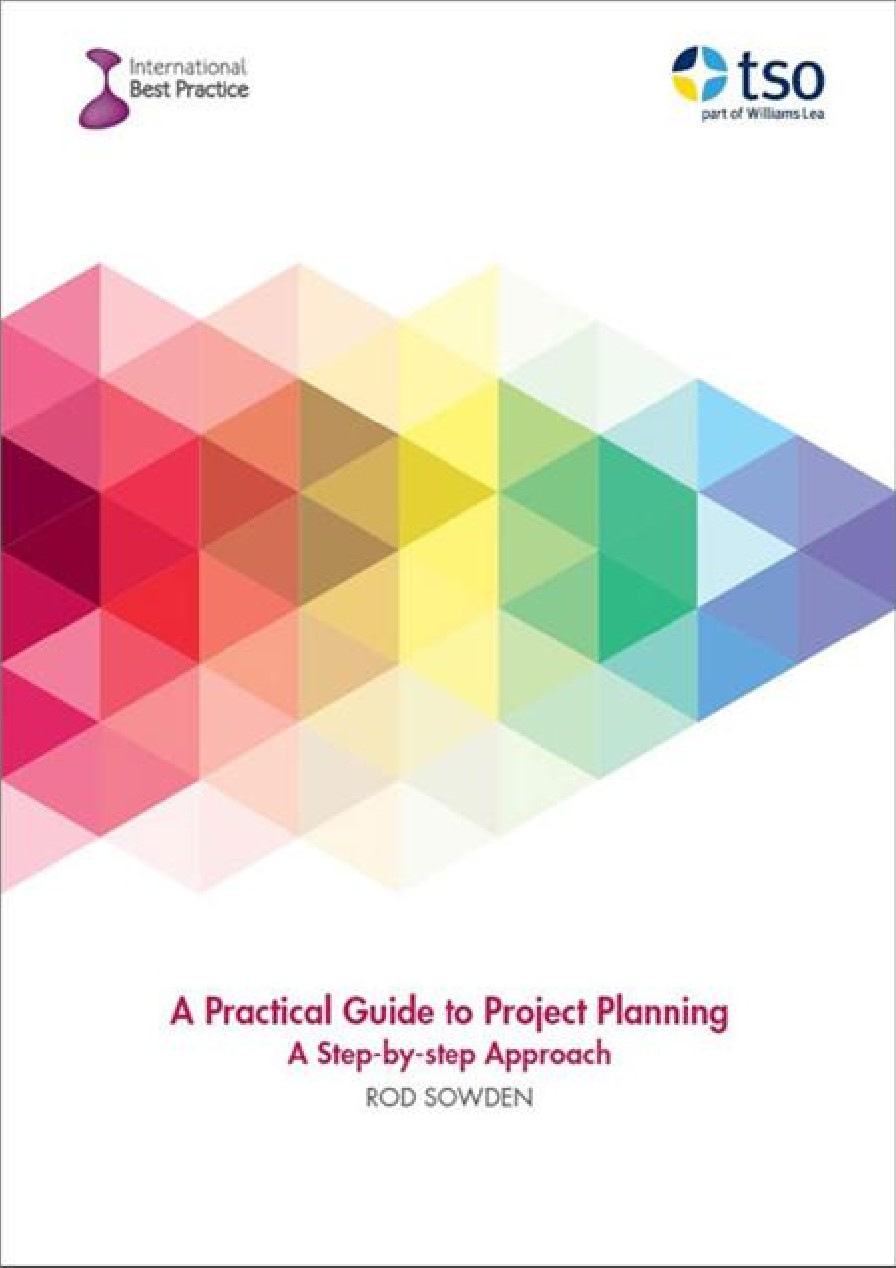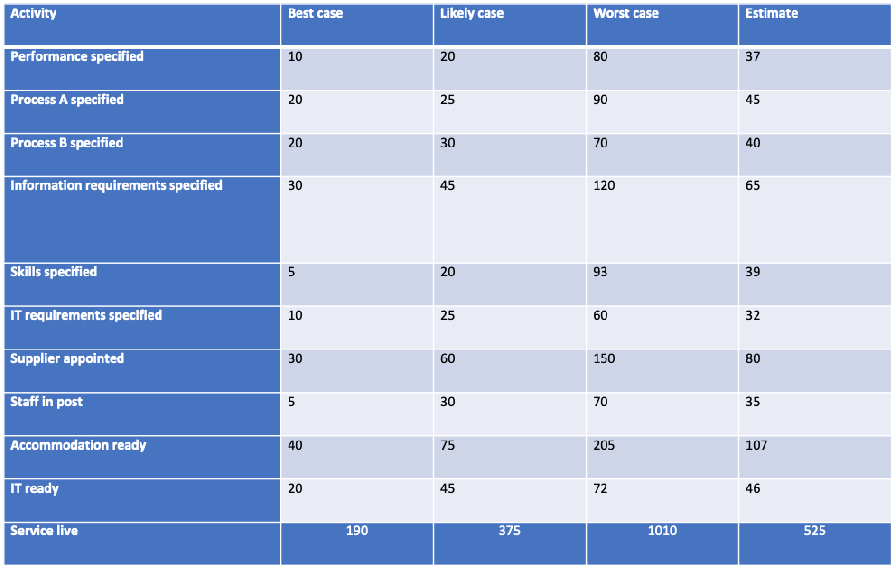eLearning Log in
Login here using your username and password
How do I set project tolerances?
Introduction
‘In preparing for battle I have always found that plans are useless, but planning is indispensable.’ Dwight D. Eisenhower, 1957
The concept of tolerance is used in the context of contingency. Tolerance is the acceptable deviation between what is estimated and what is actually delivered.
There are three major overlapping areas of control in a project
- The time the project takes
- The resources (cost) used by the project
- The quality of what the project produces.
The project must manage all these dimensions as a change to one will affect the others. If the project runs late, it will consume more resources and cost more. The only way to affect this is to change the scope and reduce the quality requirements or amount of what is delivered; this will enable the project to re-plan and claw back time and achieve within the same resources (cost). When project managers ‘take corrective action’ they are trading off these aspects. Clearly it is important to know which aspects are most important to the sponsor.
Tolerance can be allocated against:
- Budget: The most common tolerance refers to the budget; this allows flexibility on where the money is being spent. For most organizations the budget available to the project manager would only be 90% of the total. This gives some tolerance in the budget and helps ensure that cost is controlled appropriately and escalations and changes are managed effectively.
- Timescale: By setting a tolerance on the time within which the project or an element of the project can run late, the project may be able to stay within tolerance on quality or cost. It may be that the deadline has no tolerance, and in this case the tolerance will need to be set on quality or budget.
- Quality: The requirements and product descriptions will set out the acceptable criteria for the quality of the project outputs. It may be that pursuit of perfection will significantly increase the cost of the output, unless it has been set at fixed price. The key to finding tolerance on quality is calculating the time and cost of the minimum functionality; the tolerance can then be set based on the importance of the additional functionality. The timeboxing technique mentioned earlier (see section 4.2.1) can be used to manage the creation of the output.
Having a fixed price arrangement with external suppliers can reduce the need for contingency on cost, but may result in problems with time and quality if the suppliers’ estimates are incorrect and a management overhead for the project team of encouraging them to deliver. In effect this introduces a secondary risk as the supplier may underperform.
Remember that projects run a year late one day at a time. Once time slips it cannot be made up without re-planning and/or changes to the way the project is being delivered (taking corrective action). The challenge is to manage the drift of costs, time or quality that aggregates below the radar and becomes transparent late in the day. The tolerance defines whether project managers can deal with slippage themselves, or whether it has to be escalated to the project board.

This extract has been reproduced with permission from A Practical Guide to Project Planning, TSO 2016. If you’d like to read more you can purchase the copy of the book here.
Tip
Tolerance is normally set overall against the budget. This enables the project manager some leeway in balancing the project’s costs to keep them within acceptable boundaries, with agreement by the project board.
Technique
Contingency planning is used to manage the risk and set tolerance for the plan. Over and above existing tolerance, there may be a need to develop contingency plans to deal with undesirable scenarios that may develop.
Contingency plans are in effect ‘Plan B’, to be invoked if ‘Plan A’ fails or is unachievable.
When establishing tolerance there are two main approaches, and they are linked to the approach that has been taken to estimating.
If the approach to estimating has been top-down, then one of the options is to take a top-down approach to setting tolerance, by having a general tolerance of 10%. If this is done then it should be transparent where the tolerance is going to be used.
If the approach is bottom-up, then the need for tolerance should be less, as the detailed analysis of the dynamics using three-point estimation should even out the estimates and they should be more accurate.
Tip
Critical path analysis, which is explained later (see section 4.7.3), shows the aggregating effect of a delay to a critical activity. Activities on the critical path, by definition, have zero tolerance in terms of time.
Contingency plans should consider and include provision for:
- All the worst-case scenarios developing in the estimations. This enables you to calculate the maximum contingency that would be needed.
- The ‘what if’ scenarios. These illustrate the knock-on effect if one or a combination of dependent activities suffer a worst-case scenario. This information can be gathered by reviewing risks that have been identified in the risk log but which have not been included in the estimates.
Although not normally considered as part of contingency planning, positive risks or opportunities should be considered as well. Should one or more ‘best-case’ scenarios develop this may lead to costs from resources and services that are no longer needed or do not have the ability to react to opportunities. Such scenarios could be covered in a Plan C.
Example
This shows a simple contingency plan (Plan A) for setting up a helpline developed using three-point estimates.
A simple contingency plan (in days) for setting up a helpline using three-point estimates

For simplicity, Table assumes all tasks are consecutive and rounds figures in the estimates column.
The table shows the best-case scenario is 190 days to deliver the service. With reasonable luck and all things being well it will take 375 days (the likely case scenario), but because of the significant elements of moderation introduced into the three-point analysis by the worst-case scenario (1010 days), the estimate should be 525 days.
This estimate, therefore, allows 150 days’ tolerance on the most likely time.
Tip
The sooner the need for contingency is identified and communicated, the less damage will be done to the project’s reputation.
In addition to Plan A as developed in Table, there should also be a Plan B. This should cover:
- What would happen if the aggregating delays erode your tolerance
- What would happen if you are pushed past 525 days
- What you would do about it.
Contingency Plan C should cover:
- How you would cope with aggregating best-case scenarios that may lead to you finishing early
- What you would do about having idle resources (people and money) that would require deployment.
Your options overall for the project include:
- Stopping the project
- Producing a new (exception) plan
- Adjusting the budget (or tolerance)
- Reducing/increasing the quality expectations
- Re-planning against time (give more time tolerance).
